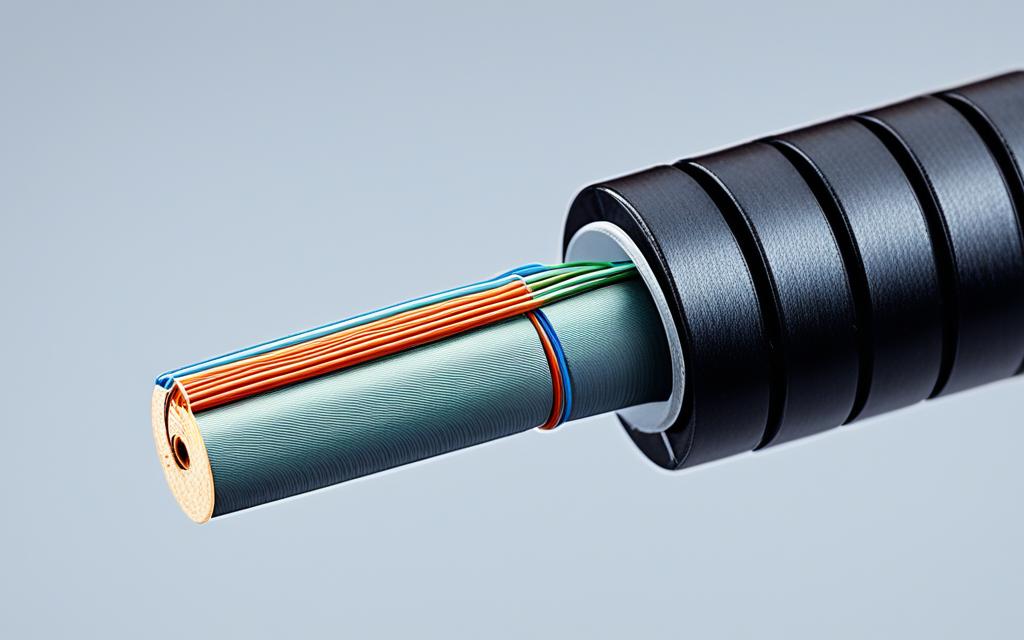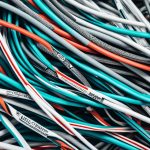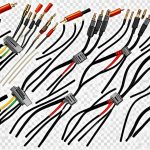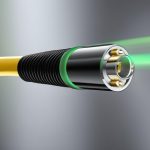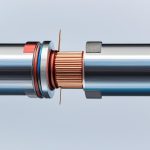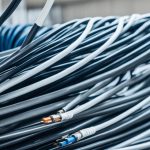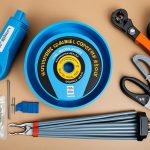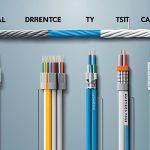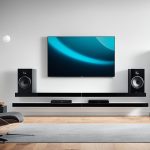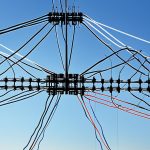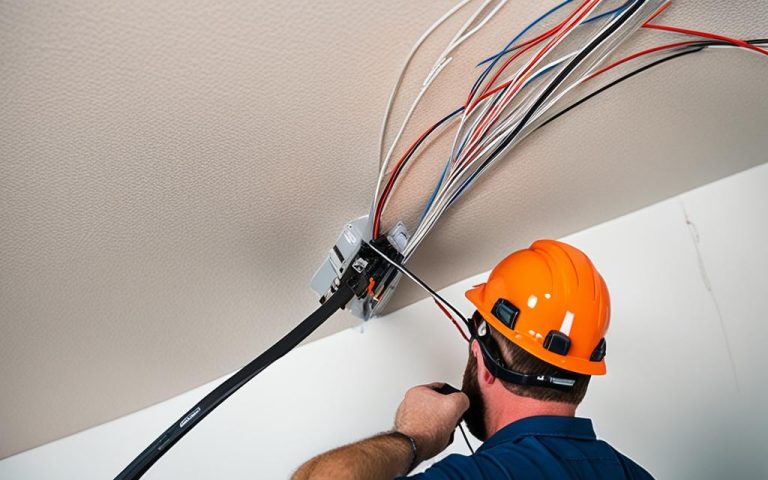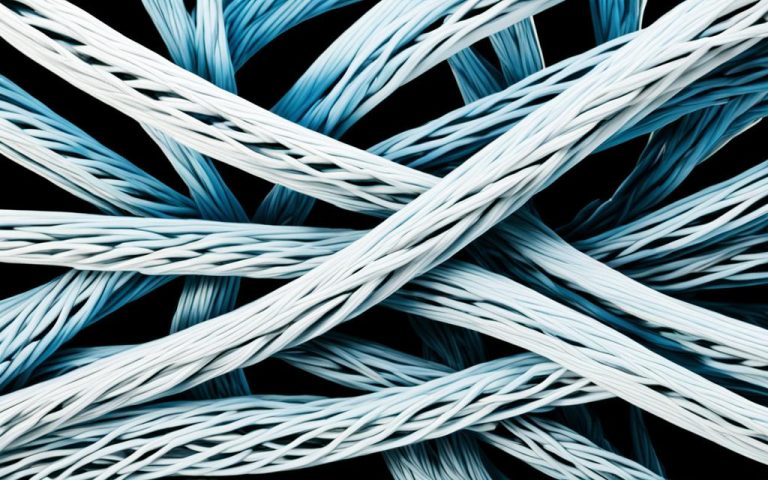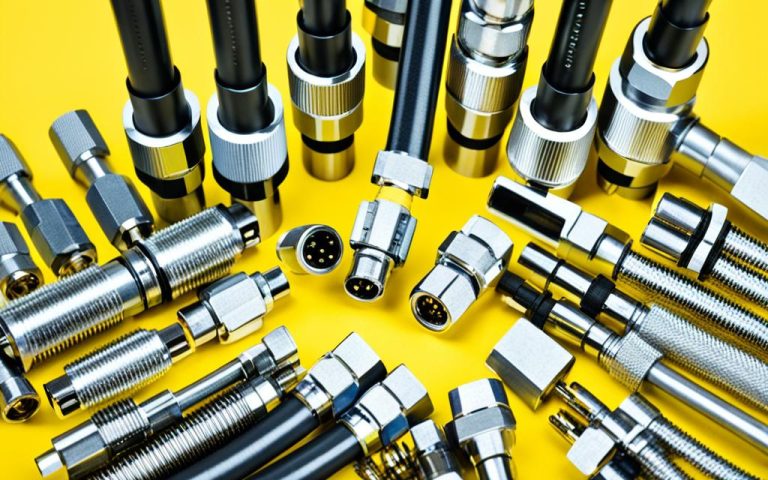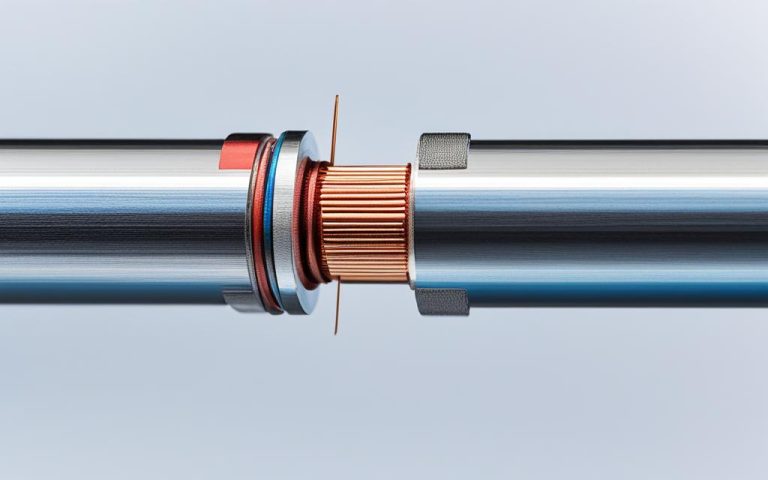When it comes to coaxial cable, the length of the cable directly affects the network performance and signal quality. Signal loss, also known as attenuation, is the loss of energy experienced by radiofrequency waves as they travel through a medium. The longer the coaxial cable, the more signal loss occurs, leading to a decrease in network performance.
Factors such as resistance and dielectric loss contribute to signal loss in coaxial cables. Resistance in the copper core of the cable generates heat and results in energy loss. Dielectric loss increases with higher frequencies, causing more significant signal loss. Different frequencies experience attenuation differently, with higher frequencies experiencing more signal loss.
In order to minimize signal loss and optimize network performance, it is important to choose the right cable type and consider the maximum support distances specified for different applications. By understanding the impact of cable length and taking appropriate measures, you can ensure reliable signal transmission and maintain optimal network performance.
Factors Affecting Signal Loss in Coaxial Cables
Signal loss in coaxial cables can be influenced by several key factors. Understanding these factors is crucial for minimizing signal loss and maximizing the performance of your coaxial network. Let’s explore the main factors affecting signal loss in coaxial cables:
Resistance
The copper core present in coaxial cables introduces resistance, which leads to energy loss in the form of heat. This resistance increases with cable length, resulting in higher signal loss. It’s essential to consider the length of the cable when setting up your coaxial network to ensure optimal signal strength.
Dielectric Loss
Dielectric loss refers to the energy loss that occurs due to the dielectric material between the inner conductor and outer shield of the coaxial cable. This type of loss increases linearly with frequency, meaning that higher frequencies experience higher signal loss. It’s important to take into account the frequency range of your application and choose a cable with suitable dielectric properties to minimize signal loss.
Cable Type
The specific type of coaxial cable used also plays a significant role in signal loss. Different cable types have varying levels of signal loss due to variations in their construction and materials. When selecting a coaxial cable, consider factors such as the cable’s impedance, shielding effectiveness, and overall quality to ensure optimal signal transmission.
Connectors and Splitters
Connectors and splitters are common components used in coaxial networks to connect multiple devices or split the signal. However, they introduce insertion loss, which further decreases the signal strength. It’s important to choose high-quality connectors and splitters and minimize their usage to mitigate signal loss.
By considering these factors – resistance, dielectric loss, cable type, connectors, and splitters – you can optimize your coaxial network’s performance and minimize signal loss. The next section will delve into the maximum support distances for coaxial cables in different applications.
Maximum Support Distances for Coaxial Cables
When it comes to coaxial cables, understanding the maximum support distances is essential for ensuring optimal signal transmission and minimizing signal loss. The maximum support distances for coaxial cables can vary depending on the specific application and cable type used. In broadband cabling applications, there are specific standards established by ANSI/TIA 568.4 that provide guidance on these distances.
These standards take into account the signal attenuation caused by cable length and frequency, ensuring that the maximum distances specified are suitable for different cable types. Two popular cable series that are widely used are the RG Series and the LMR Series.
The RG Series includes cable types such as RG-59, RG-8, and RG-11, which are commonly used in various applications. These cables have specific maximum support distances that need to be adhered to in order to maintain optimal signal strength and quality.
The LMR Series, also known as Low Loss Cable, is another widely used cable series. These cables provide low attenuation and are suitable for applications that require long cable runs while minimizing signal loss.
To provide a better understanding of the maximum support distances for coaxial cables, refer to the following table:
| Cable Type | Maximum Support Distance |
|---|---|
| RG-59 | 500 feet |
| RG-8 | 1,500 feet |
| RG-11 | 3,000 feet |
| LMR-200 | 600 feet |
| LMR-400 | 1,200 feet |
These maximum support distances are crucial in ensuring that the signal travels without significant loss, maintaining optimal performance in various applications such as television broadcasting, telecommunications, and data transmission.
By adhering to the specified maximum support distances, broadband cabling applications can be set up with confidence, knowing that the signal strength and quality will be preserved throughout the network.
Overall, understanding the maximum support distances for coaxial cables is vital in achieving reliable and efficient signal transmission. By choosing the appropriate cable type and adhering to the guidelines established for different applications, you can ensure optimal performance and minimize signal loss.
Insertion Loss and Attenuation in Coaxial Cables
When it comes to ensuring optimal signal strength and minimizing signal loss in coaxial cables, understanding the concepts of insertion loss and attenuation is crucial. Insertion loss refers to the decrease in signal strength that occurs when devices such as splitters and connectors are added to the signal pathway. Each additional connection introduces a certain amount of loss, typically ranging from 3.6 dB to 4.0 dB. Over numerous connections, this loss can significantly impact the overall signal strength.
Attenuation, on the other hand, is the reduction of signal strength that occurs as the signal travels through the cable. This reduction is influenced by factors such as cable length, cable construction, and frequency. In general, longer cables and higher frequencies result in higher attenuation values, leading to more significant signal loss.
To maintain optimal signal strength, it is essential to minimize insertion loss and consider the attenuation caused by cable length and frequency. By selecting high-quality connectors and splitters and using shorter cable lengths whenever possible, you can mitigate the effects of insertion loss. Additionally, understanding the desired frequency range and using cables with appropriate attenuation characteristics can help minimize signal loss.
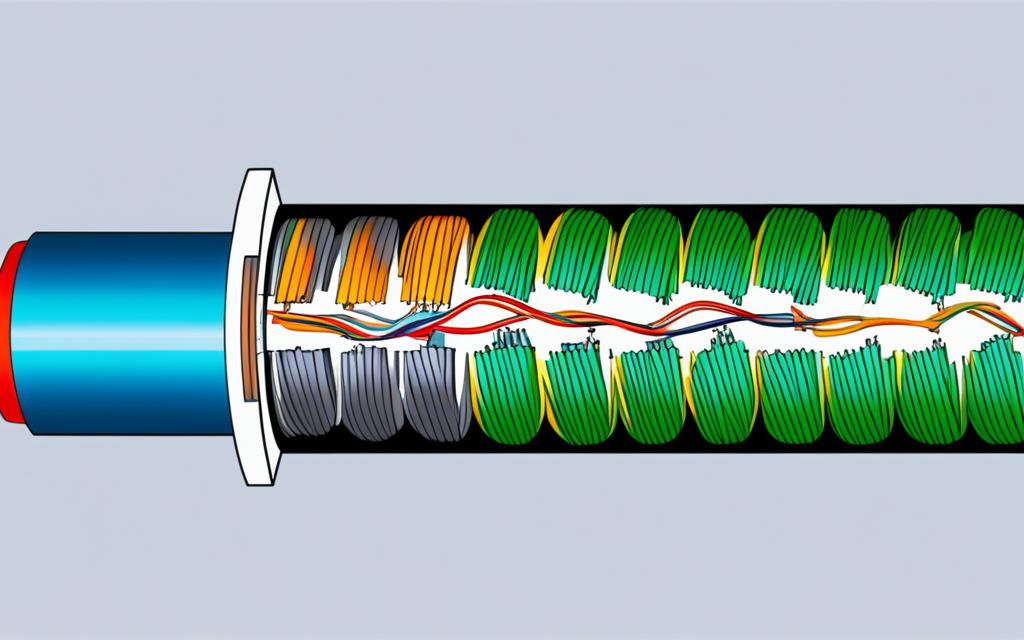
| Coaxial Cable Type | Attenuation (dB/100ft) |
|---|---|
| RG-6 | 0.50 |
| RG-11 | 0.26 |
| LMR-400 | 0.07 |
The table above showcases the attenuation rates for different coaxial cable types over a 100-foot distance. As seen, the LMR-400 cable exhibits significantly lower attenuation compared to RG-6 and RG-11 cables, making it a suitable choice for applications where signal loss needs to be minimized.
Coaxial Cable Length and Frequency Considerations
In high-frequency applications and broadband signal transmission, the length of a coaxial cable plays a crucial role in signal loss. As the frequency of the signal increases, the cable’s attenuation also increases, resulting in more significant signal loss.
For instance, satellite TV signals, which operate at high frequencies, can experience notable signal loss even over relatively short distances. The same applies to high-definition digital television (HDTV) signals. To maintain optimal signal quality and strength, it is essential to consider signal loss and select appropriate cable lengths for different frequencies.
Impact of Frequency on Signal Loss in Coaxial Cables
When it comes to coaxial cables, signal loss is not uniform across all frequencies. As the frequency increases, the cable’s attenuation also increases, making it more susceptible to signal loss. This is particularly relevant for broadband signals and high-frequency applications.
| Frequency Range | Attenuation Rate (dB/m) |
|---|---|
| Low Frequency | 0.5 dB/m |
| Medium Frequency | 1.2 dB/m |
| High Frequency | 2.5 dB/m |
As shown in the table above, the attenuation rate increases with higher frequencies. Therefore, it is vital to choose the appropriate cable length for a specific frequency range to minimize signal loss and ensure optimal signal quality and strength.
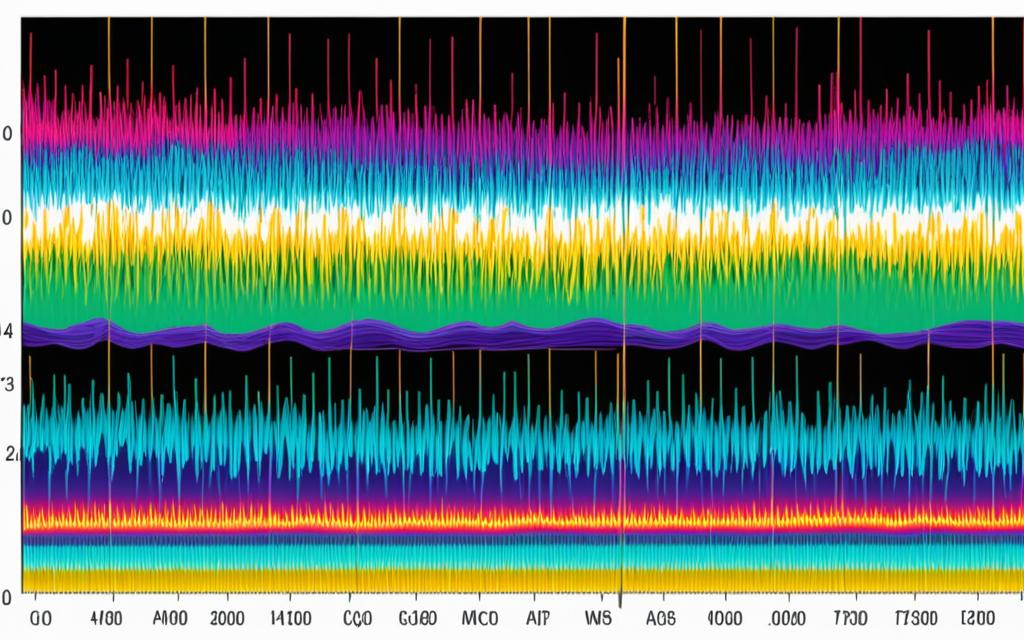
Conclusion
Coaxial cable length considerations are essential for optimizing network performance and maintaining signal quality. As the signal travels through the cable, it experiences signal loss, or attenuation, which becomes more significant with longer cable lengths. Resistance and dielectric loss are the primary factors contributing to signal loss in coaxial cables.
To ensure optimal network performance, it is crucial to choose the right cable type and minimize the use of splitters and connectors. Different cable types have varying levels of signal loss, and each additional splitter or connector introduces insertion loss, which further decreases the signal strength.
In addition, adhering to the maximum support distances specified for different applications is essential. These guidelines have been established to take into account the signal attenuation caused by cable length and frequency, providing specific standards for popular cable types like the RG Series (e.g., RG-59, RG-8, RG-11) and the LMR Series (Low Loss Cable).
By understanding and implementing coaxial cable length considerations, you can optimize your network’s performance, minimize signal loss and attenuation, and ensure reliable signal transmission for a seamless and high-quality communication experience.
FAQ
What is signal loss in coaxial cables?
Signal loss, also known as attenuation, is the loss of energy experienced by radiofrequency waves as they travel through a medium. It occurs due to factors like resistance and dielectric loss.
What factors affect signal loss in coaxial cables?
Signal loss in coaxial cables is influenced by factors such as the resistance of the copper core, dielectric loss, cable type, and the presence of connectors or splitters.
What are the maximum support distances for coaxial cables?
The maximum support distances for coaxial cables vary depending on the specific application and cable type. ANSI/TIA 568.4 provides standards for different cable types, including RG Series and LMR Series.
What is insertion loss in coaxial cables?
Insertion loss refers to the signal loss that occurs when devices like splitters and connectors are added to the coaxial cable’s signal pathway. It can accumulate with each connection.
How does cable length impact signal loss?
The length of a coaxial cable has a significant impact on signal loss, especially for broadband signals and high-frequency applications. Longer cables result in more significant losses.
How can I optimize network performance and minimize signal loss?
To optimize network performance, choose the right cable type, minimize the use of splitters and connectors, and adhere to maximum support distances. Consider signal loss and cable length for different frequencies.

